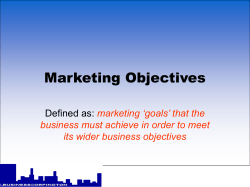
“The 79th of Stem Cell Biology and Regenerative Medicine Forum”
“The 79th of Stem Cell Biology and Regenerative Medicine Forum” Date:Mar 26th (Thu) 2015 Time : 18:00 〜 19:30 Place:8th fl of New Hospital Building ------------------------------------------------------------------------------------------------------------------------------------ (Internal Speaker) 18:00-18:30 Takeo Mukai (Division of Molecular of Therapy, Center for Advanced Medical Research, Department of Cell Processing and Transfusion, IMSUT) Neurosphere formation enhance the neurogenic differentiation potentials in umbilical cord-Mesenchymal Stromal Cell (External Speaker) 18:30-19:30 Takeshi Taketani (Division of Blood Transfusion, Shimane University Hospital, Shimane, Japan, Department of Pediatrics, Shimane University Faculty of Medicine, Shimane, Japan) Ex Vivo Expanded Allogeneic Mesenchymal Stem Cells with bone marrow transplantation Improved Osteogenesis in Patients with severe Hypophosphatasia ------------------------------------------------------------------------------------------------------------------------------------- Hosted by Center for Stem Cell Biology and Regenerative Medicine ---Information--* Please register attendance at the reception desk. * Next forum(the80th)will be held on Apr. 16th(Thu)18:00〜 at Tommy Hall. * Please contact tatsu-m@ims.u-tokyo.ac.jp, for Forum speaker recommendations Neurogenic differentiation potentials in umbilical cord-Mesenchymal Stromal Cell Takeo Mukai (Division of Molecular of Therapy, Center for Advanced Medical Research, Department of Cell Processing and Transfusion, IMSUT) Background: Human umbilical cord (UC) is a rich source for mesenchymal stromal cells (MSCs), and UC-MSCs have been reported to have multilineage potential including neural differentiation. The objectives of this study are to investigate the characteristics and the possibility of neurogenic differentiation of UC-MSCs. Methods: UC-MSCs were collected by the explant method, and were examined about their characteristics and differentiation potential. The harvested cells were induced the neurogenic differentiation from UC-MSCs and the expression levels of neural markers by immunocytochemistry and quantitative RT-PCR were investigated. Results: UC-MSCs expressed MSC biomarkers; positive for CD73, CD105, CD90, HLA-ABC, and CD44, and negative for CD45 and HLA–DR, and also they were induced into adipocytes, chondrocytes, and osteoblasts to confirm the differentiation potential of UC-MSCs. UC-MSCs plated in the adherent culture dishes showed spindle shaped, a fibroblast-like morphology. However, cells shifted to a neuronal-like bipolar morphology, with long thin processes and a depressed proliferation rate, in response to culturing in neurogenic differentiation medium. UC-MSCs with neurogenic differentiation exhibited a significantly higher expression of neural markers—including microtubule-associated protein (MAP2), MUSASHI1, glial fibrillary acidic protein (GFAP), and NESTIN—compared to UC-MSCs cultured with usual medium. Discussion: Neurogenic differentiation potential of UC-MSCs was proved and they may serve as a potential source of cells for neurogenic regenerative medicine. Ex Vivo Expanded Allogeneic Mesenchymal Stem Cells with bone marrow transplantation Improved Osteogenesis in Patients with severe Hypophosphatasia Takeshi Taketani (Division of Blood Transfusion, Shimane University Hospital, Shimane, Japan, Department of Pediatrics, Shimane University Faculty of Medicine, Shimane, Japan) Treatment of almost congenital skeletal diseases (SKDs) is not established although these patients have a fatal course and/or live with a severe physical handicap. Patients with severe hypophosphatasia (HPP), one of the critical SKDs caused by homozygous mutations of the tissue-nonspecific alkaline phosphatase (TNSALP) gene, develop osteogenic impairment with extremely low ALP activity, resulting in a fatal course during infancy. There is currently no well-established therapy for HPP. Mesenchymal stem cells (MSCs) differentiate into various mesenchymal lineages, including bone and cartilage. MSCs can easily be isolated and expanded in vitro while maintaining genetic stability, furthermore the MSCs also modulate immune system and support growth of hematopoietic stem cell. Due to these distinctive properties of MSCs, they are clinically available for treatments of graft versus host disease (GVHD) and regeneration of various tissues. The efficacy of allogeneic hematopoietic stem cell transplantation for congenital SKDs is limited, and therefore, we focused on MSCs for the treatment of HPP. To determine the effect of MSCs on osteogenesis, we performed multiple infusions of ex vivo expanded allogeneic MSCs for patients with severe HPP who had undergone bone marrow transplantation (BMT) from asymptomatic relatives harboring the heterozygous mutation. There were improvements in not only bone mineralization but also muscle mass, respiratory function, and mental development, resulting in the patients being alive. After the infusion of MSCs, chimerism analysis of the mesenchymal cell fraction isolated from bone marrow in the patients demonstrated that donor-derived DNA sequences existed. Adverse events of BMT were tolerated, whereas those of MSC infusion did not occur. Interestingly, immunosuppresant-refractory GVHD was dramatically improved by MSC infusion. However, restoration of ALP activity was limited, and normal bony architecture could not be achieved. Our data suggest that multiple MSC infusions, following BMT, were effective and brought about clinical benefits for patients with lethal HPP. Allogeneic MSC-based therapy would be useful for patients with other CKDs if the curative strategy to restore clinically normal features, including bony architecture, can be established.
© Copyright 2025











